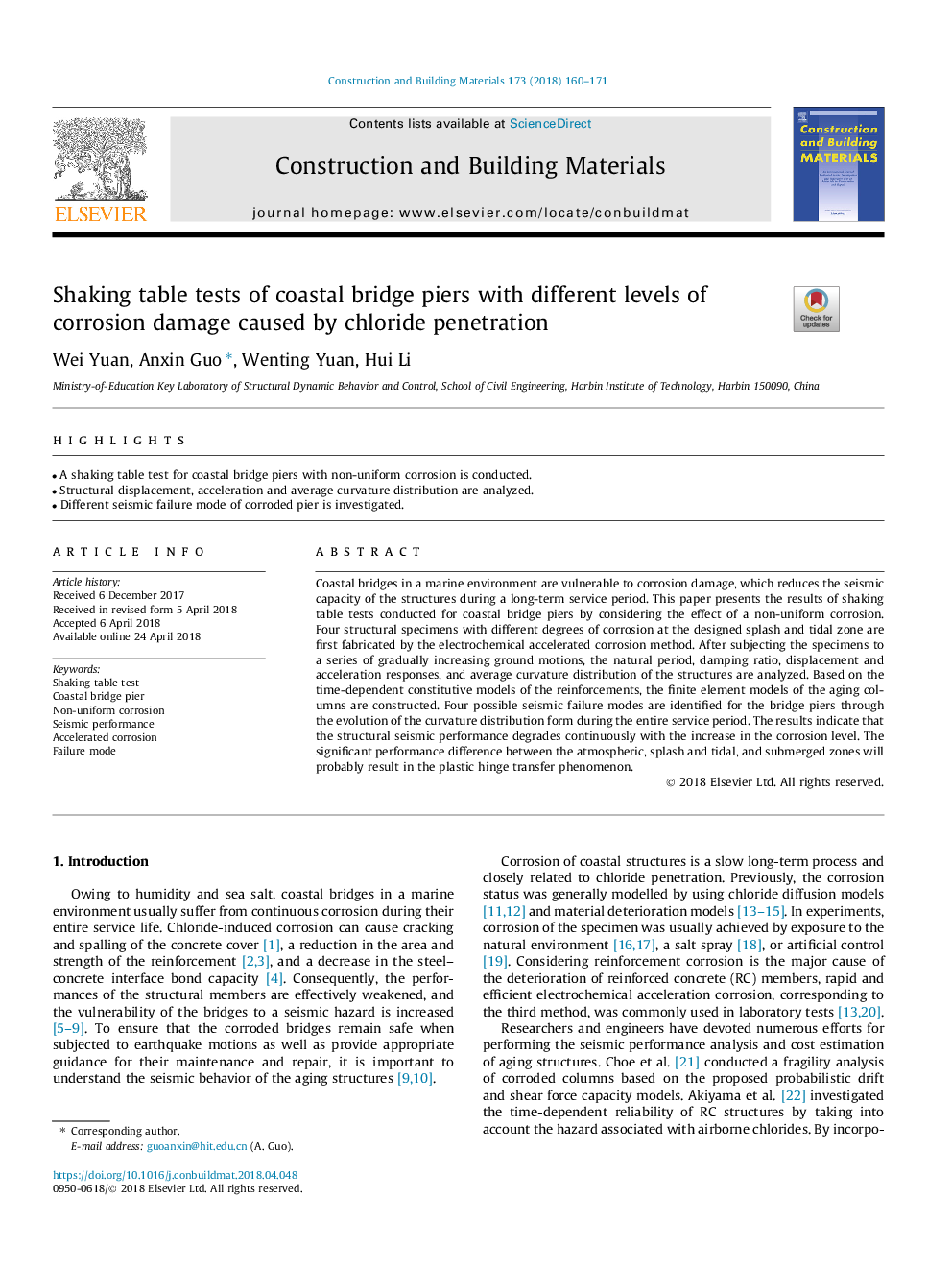| Article ID | Journal | Published Year | Pages | File Type |
|---|---|---|---|---|
| 6713572 | Construction and Building Materials | 2018 | 12 Pages |
Abstract
Coastal bridges in a marine environment are vulnerable to corrosion damage, which reduces the seismic capacity of the structures during a long-term service period. This paper presents the results of shaking table tests conducted for coastal bridge piers by considering the effect of a non-uniform corrosion. Four structural specimens with different degrees of corrosion at the designed splash and tidal zone are first fabricated by the electrochemical accelerated corrosion method. After subjecting the specimens to a series of gradually increasing ground motions, the natural period, damping ratio, displacement and acceleration responses, and average curvature distribution of the structures are analyzed. Based on the time-dependent constitutive models of the reinforcements, the finite element models of the aging columns are constructed. Four possible seismic failure modes are identified for the bridge piers through the evolution of the curvature distribution form during the entire service period. The results indicate that the structural seismic performance degrades continuously with the increase in the corrosion level. The significant performance difference between the atmospheric, splash and tidal, and submerged zones will probably result in the plastic hinge transfer phenomenon.
Keywords
Related Topics
Physical Sciences and Engineering
Engineering
Civil and Structural Engineering
Authors
Wei Yuan, Anxin Guo, Wenting Yuan, Hui Li,
